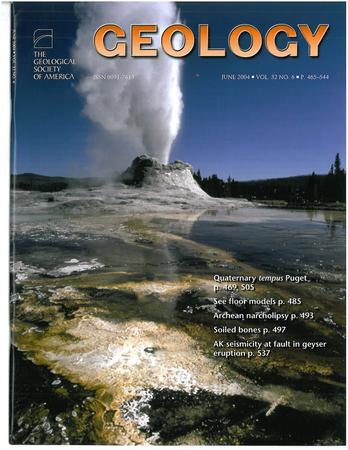IF 4.6
1区 地球科学
Q1 GEOLOGY
引用次数: 0
摘要
尽管具有重要意义,但该地区高原生长的发掘历史和机制仍存在争议。本文利用WKL三个基岩高程样带的磷灰石裂变径迹(AFT)和(U-Th)/He (AHe)热年代学数据,对该地区中新世的发掘过程进行了改进。我们的结果显示,中新世晚期出土在约11 ~ 10和约7 ~ 6 Ma时出现了区域一致的两相加速。结合区域热年代学、岩浆和地震资料显示,随着挖掘速率的增加,冷却时代和(超)钾质岩浆作用向西kl系统年轻化。这些趋势反映了由印度板块向亚洲的渐进压痕推动的高原向外扩张。这一过程在约11 ~ 10 Ma达到顶峰,当时印度克拉通板块直接撞击塔里木克拉通,地表迅速隆起,并在WKL造山带形成了约10 Ma和更年轻的(超)钾质岩浆。本文章由计算机程序翻译,如有差异,请以英文原文为准。
Late Miocene rapid exhumation in the West Kunlun range: Insights into Tibetan Plateau growth and India-Asia lithospheric collision
The West Kunlun (WKL) orogen, a pivotal boundary on the western Tibetan Plateau, records the dynamic interplay between northward underthrusting Indian lithosphere and the Tarim craton. Despite its significance, the exhumation history and mechanisms of plateau growth in this region remain contentious. Here, apatite fission-track (AFT) and (U-Th)/He (AHe) thermochronology data from three bedrock elevation transects across the WKL were used to refine the Miocene exhumation processes in the region. Our results reveal a regionally consistent two-phase acceleration in late Miocene exhumation at ca. 11−10 and ca. 7−6 Ma. Integration with regional thermochronologic, magmatic, and seismic data shows a systematic younging of cooling ages and (ultra)potassic magmatism toward the WKL, alongside increasing exhumation rates. These trends reflect outward plateau expansion driven by progressive indentation of the Indian plate into Asia. This culminated at ca. 11−10 Ma, when the cratonic Indian slab directly impinged the Tarim craton, as evidenced by rapid surface uplift and the formation of ca. 10 Ma and younger (ultra)potassic magmas in the WKL orogen. Our findings highlight the coupling between deep lithospheric processes and surface deformation, providing critical constraints on the timing of the India-Tarim collision and the mechanisms driving plateau growth along the northwestern margin of the Tibetan Plateau.
求助全文
通过发布文献求助,成功后即可免费获取论文全文。
去求助
来源期刊

Geology
地学-地质学
CiteScore
10.00
自引率
3.40%
发文量
228
审稿时长
6.2 months
期刊介绍:
Published since 1973, Geology features rapid publication of about 23 refereed short (four-page) papers each month. Articles cover all earth-science disciplines and include new investigations and provocative topics. Professional geologists and university-level students in the earth sciences use this widely read journal to keep up with scientific research trends. The online forum section facilitates author-reader dialog. Includes color and occasional large-format illustrations on oversized loose inserts.
 求助内容:
求助内容: 应助结果提醒方式:
应助结果提醒方式:


